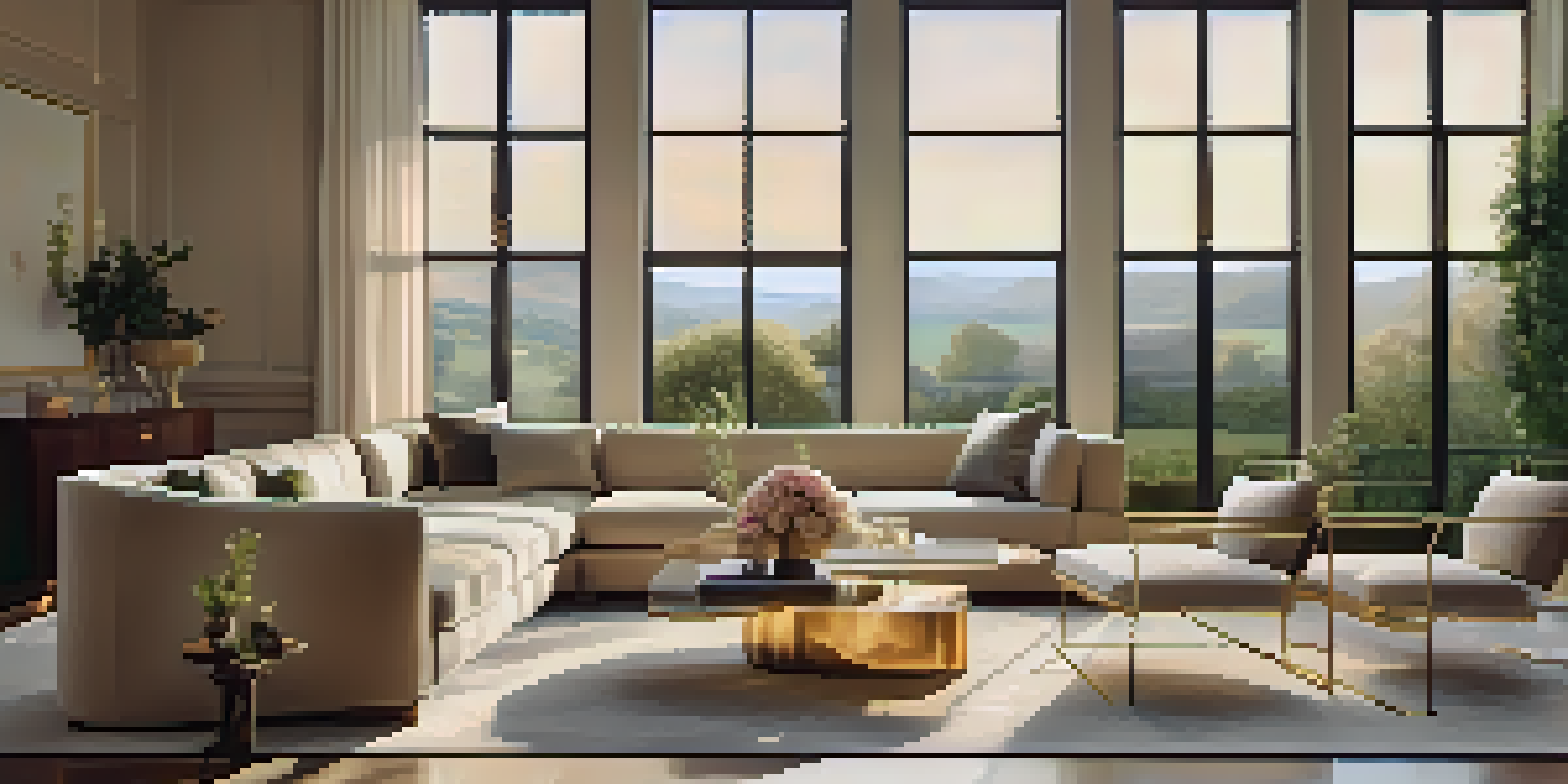Photography Tips for Capturing Luxury Real Estate

Understand Your Audience and Their Preferences
Before you even pick up your camera, it’s crucial to understand who your audience is. Are you targeting affluent buyers, investors, or renters? Knowing your audience will steer your photography style, ensuring it resonates with potential clients.
Photography is the story I fail to put into words.
For instance, high-end buyers often appreciate lifestyle elements in photos, such as staging that showcases how a space can be utilized. This means capturing not just the property but also the lifestyle it promotes. Think about what luxury means to your audience.
By keeping their preferences in mind, you can create images that not only highlight the property’s features but also evoke emotions and aspirations, making your work stand out in a crowded market.
Utilize Natural Lighting for Stunning Shots
Lighting is one of the most critical elements in photography, especially in luxury real estate. Natural light can enhance the beauty of a property and create inviting atmospheres. Ideally, aim to shoot during the golden hour, shortly after sunrise or before sunset, when the light is soft and warm.

However, don’t underestimate the power of strategic window placement. Open curtains and blinds to let in as much light as possible, illuminating spaces beautifully. If you need additional light, consider using reflectors or softboxes to fill in shadows without harsh contrasts.
Know Your Audience's Preferences
Understanding your audience allows you to tailor your photography style to evoke emotions and aspirations that resonate with potential buyers.
Remember, the goal is to create images that evoke warmth and luxury, making potential buyers envision themselves living in the space.
Focus on Composition and Framing Techniques
Composition plays a vital role in how your images are perceived. The rule of thirds is a classic technique where you divide your frame into nine equal sections, placing key elements along those lines or at their intersections. This creates a balanced and visually appealing photo.
You don’t take a photograph, you make it.
Another technique is leading lines, which guide the viewer’s eye towards the focal point. Use architectural lines, pathways, or even furniture arrangements to create a flow within your images that draws attention to the luxury features of the property.
Experiment with different angles and perspectives; sometimes, a low angle can emphasize grandeur, while a high angle can showcase layout. The right composition can transform a simple photo into a captivating piece of art.
Incorporate Staging to Highlight Potential
Staging is key in real estate photography as it helps potential buyers visualize the space’s potential. Collaborate with a staging professional who understands how to accentuate luxury features and create inviting atmospheres. A well-staged home can significantly enhance the appeal of your images.
Consider using furniture and decor that reflect the target market's lifestyle. For luxury properties, this often means elegant, modern furnishings that exude sophistication. Remember, less is often more—avoid clutter to keep the focus on the property itself.
Utilize Natural Lighting Effectively
Natural light enhances the beauty of luxury properties, creating inviting atmospheres that help potential buyers envision themselves in the space.
Additionally, think about adding personal touches, like fresh flowers or tasteful art pieces, to elevate the ambiance and make the property feel like a home.
Use High-Quality Equipment for Professional Results
Investing in high-quality photography equipment can make a significant difference in the results you achieve. A DSLR or mirrorless camera with a wide-angle lens is ideal for capturing the spaciousness of luxury properties. A wide-angle lens allows you to showcase entire rooms without distortion.
In addition to your camera, consider using a tripod for stability, especially in low-light situations. This helps reduce blur and ensures sharp images, which is particularly important for high-end real estate where detail matters.
Lastly, don’t forget about editing software. Post-processing can refine your images, enhance colors, and correct any imperfections, making them look polished and professional.
Highlight Unique Features and Amenities
Luxury real estate often comes with unique features and amenities that set it apart from other properties. Whether it’s a stunning view, a gourmet kitchen, or a home theater, make sure to emphasize these elements in your photography. These details are what many buyers are looking for and can influence their purchasing decisions.
Consider creating a shot list before your shoot to ensure you capture all the standout features. This can include close-ups of intricate details like molding or fixtures, as well as broader shots that showcase the overall ambiance.
Highlight Unique Features
Emphasizing unique features and amenities in your photography can create a compelling narrative that attracts potential buyers.
By thoughtfully highlighting these unique aspects, you can create a narrative around the property that draws potential buyers in and helps them imagine their lives within those walls.
Edit Thoughtfully to Enhance Visual Appeal
Post-processing is an essential step in real estate photography that can elevate your images to the next level. Tools like Adobe Lightroom or Photoshop allow you to adjust exposure, contrast, and color balance, ensuring your photos reflect the property’s luxury accurately.
Be careful not to over-edit; the goal is to enhance, not to create an unrealistic representation of the property. Subtle adjustments can make a world of difference, such as brightening a room or correcting lens distortion.

Consider creating presets that reflect your style and the luxury market, ensuring consistency across your portfolio. A cohesive look will help you establish a recognizable brand in the competitive real estate photography space.